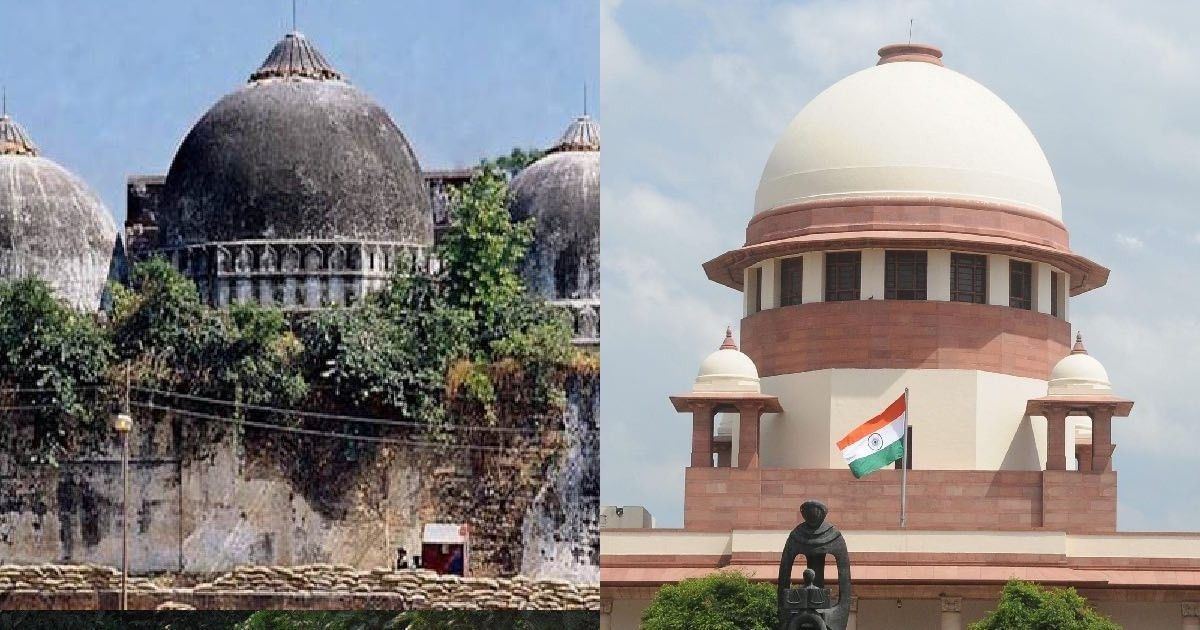After hearing the Ayodhya dispute for almost a month on a day to day basis, the Supreme Court has concluded the 40-day hearing.
The famous case of Ayodhya relates to a dispute over a decade old temple-mosque dispute in Ayodhya District, Uttar Pradesh. It has come to be the second most prolonged proceeding in the history of litigation in India, after the landmark hearing in Keshavananda Bharti in 1973, which lasted for 68 days. Finally, when the arguments wrapped up on October 16, 2019, the Supreme Court has reserved its judgement. The case is intricately sensitive with rising political influences involving age-old history.

The ‘enough is enough’ moment:
The final day of arguments saw a rather dramatic turnout of events in the apex court, when a senior counsel for the Muslim parties, Rajeev Dhavan tore a pictorial map. The map was the proof of the exact birthplace of Lord Ram in the Ayodhya District, Uttar Pradesh. It is being reported that when presented by the Hindu Mahasabha, Rajeev Dhavan tore it apart. To this unforeseen exercise in the apex court in a highly sensitive and charged matter, the five-judge constitution bench headed by Chief Justice Ranjan Gogoi observed by saying ‘enough is enough’.

The map is said to have produced before the court to substantiate the claim that a dome which is being contested is instead the birthplace of the deity. On being given the map, Rajeev Dhavan respectfully asked the judge as to what is he supposed to do with it, to which the bench replied ‘if it is irrelevant, you can shred the document into pieces’. After which, senior counsel Rajeev Dhavan tore the map.
Dhavan says that he had sought the permission of the bench before tearing the document, which is being omitted by most media reports. However, towards the end to the court-room drama that took place, the CJI had said “Dhavan is right that the chief justice said, so he tore up. Let this clarification also be widely reported.”
Background:
The age-old dispute between Ram Janmbhoomi and the Babri Masjid relates to some 2.77 acres of land has been ongoing since 1950. The bench at the apex court presently hearing the matter comprises of S.A.Bobde, D.Y.Chandarchud, Ashok Bhushan and S.A. Nazeer along with the CJI Ranjan Gogoi.

Though the judgement has been reserved by the apex court, keeping in mind the technicalities of this case, however, there is time limitation for pronouncing of the judgement, as the same is to be done before Justice Gogoi retires from office on November 17. The contesting parties have been given a three day time to file written notes by narrowing down the issues for adjudication and framing the relief sought.
Earlier this year, the apex court referred the matter to mediation, and it finally ended up landing in the Supreme Court because the bids of mediation failed. The parties throughout mediation didn’t seem prepared to negotiate. The mediation panel as formed by the Supreme Court comprised of F.M.I. Kallifulla, a former apex court judge, Sri Sri Ravi Shankar, founder of Art of Living Foundation and Sriram Panchu, an acclaimed mediator. The report of the mediation panel will also be considered while delivering a verdict in the instant matter.

















